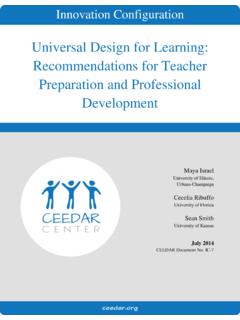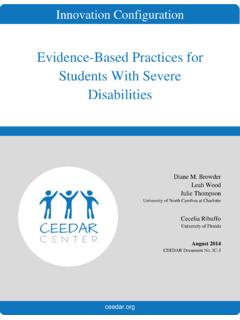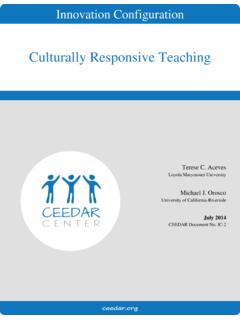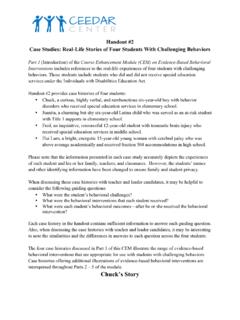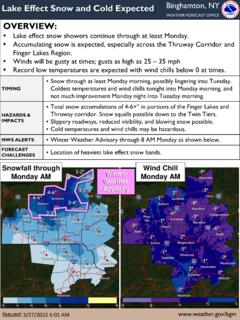Transcription of Behavior Management Tier Two and Three Strategies - CEEDAR
1 Innovation ConfigurationEvidence-Based Practices for Classroom and Behavior Management : tier 2 and tier 3 StrategiesNicholas A. Gage University of Florida June 2015 CEEDAR Document No. IC-15 Page 2 of 39 Disclaimer: This content was produced under Department of Education, Office of Special Education Programs, Award No. H325A120003. Bonnie Jones and David Guardino serve as the project officers. The views expressed herein do not necessarily represent the positions or polices of the Department of Education. No official endorsement by the Department of Education of any product, commodity, service, or enterprise mentioned in this website is intended or should be inferred. Recommended Citation: Gage, (2015). Evidence-based practices for classroom and Behavior Management : tier 2 and tier 3 Strategies (Document No.)
2 IC-15). Retrieved from University of Florida, Collaboration for Effective Educator, Development, Accountability, and Reform Center website: Note: There are no copyright restrictions on this document; however, please use the proper citation above. Page 3 of 39 Table of Contents Innovation Configuration for Evidence-Based Practices for Classroom and Behavior Management : tier 2 and tier 3 Strategies .. 4 Secondary Interventions .. 7 Check In/Check Out .. 8 Check, Connect, and Expect .. 10 First Step to Success .. 12 Tertiary Interventions .. 14 Functional Behavior Assessment Interventions .. 14 Prevent-Teach-Reinforce .. 17 Conclusion .. 19 References .. 21 Appendix A: Innovation Configuration for Evidence-Based Practices for Classroom and Behavior Management : tier 2 and tier 3 Strategies .. 29 Appendix B: Levels of Support for Evidence-Based Practices for Classroom and Behavior Management : tier 2 and tier 3 Strategies .
3 35 Page 4 of 39 Innovation Configuration for Evidence-Based Practices for Classroom and Behavior Management : tier 2 and tier 3 Strategies This paper features an innovation configuration (IC) matrix that can guide teacher preparation professionals in the development of appropriate content for evidence-based practices (EBPs) for Behavior Management . This matrix appears in Appendix A. An IC is a tool that identifies and describes the major components of a practice or innovation. With the implementation of any innovation comes a continuum of configurations of implementation from non-use to the ideal. ICs are organized around two dimensions: essential components and degree of implementation (Hall & Hord, 1987; Roy & Hord, 2004). Essential components of the IC along with descriptors and examples to guide application of the criteria to course work, standards, and classroom practices are listed in the rows of the far left column of the matrix.
4 Several levels of implementation are defined in the top row of the matrix. For example, no mention of the essential component is the lowest level of implementation and would receive a score of zero. Increasing levels of implementation receive progressively higher scores. ICs have been used in the development and implementation of educational innovations for at least 30 years (Hall & Hord, 2001; Hall, Loucks, Rutherford, & Newton, 1975; Hord, Rutherford, Huling-Austin, & Hall, 1987; Roy & Hord, 2004). Experts studying educational change in a national research center originally developed these tools, which are used for professional development (PD) in the Concerns-Based Adoption Model (CBAM). The tools have also been used for program evaluation (Hall & Hord, 2001; Roy & Hord, 2004). Use of this tool to evaluate course syllabi can help teacher preparation leaders ensure that they emphasize proactive, preventative approaches instead of exclusive reliance on Behavior reduction Strategies .
5 The IC included in Appendix A is designed for teacher preparation programs, although it can be modified as an observation tool for PD purposes. The Collaboration for Effective Educator, Development, Accountability, and Reform ( CEEDAR ) Center ICs are extensions of the seven ICs originally created by the National Comprehensive Center for Teacher Quality (NCCTQ). NCCTQ professionals wrote the above description. Page 5 of 39 Behavior Management is a critical skill that all teachers, particularly special education teachers, must employ to be successful. One framework for conceptualizing Behavior Management is Multi-Tiered System of Supports (MTSS). With MTSS, all students receive prevention Strategies delivered at the school-wide and classroom levels ( , classroom Management ) while some students receive secondary ( , targeted) and tertiary ( , intensive) interventions to address school-based academic and behavioral concerns (Fuchs & Fuchs, 2006; Sugai & Horner, 2009).
6 The behavioral MTSS framework is typically defined as School-Wide Positive Behavior Support (SWPBS); in this framework, all prevention and intervention Strategies focus on (a) identifying socially appropriate replacement Behavior , (b) explicitly teaching the replacement Behavior , (c) using a continuum of consequence Strategies to minimize reinforcement of a problem Behavior , and (d) continually using data to assess progress (Sugai & Horner, 2002). The SWPBS framework has promising evidence of effectiveness, including positive student- and school-level impacts on academic achievement and Behavior (Bradshaw, Leaf, Thornton, & Leaf, 2009; Horner et al., 2009). SWPBS comprises Three tiers of prevention and intervention: (a) primary, (b) secondary, and (c) tertiary. The primary level ( , tier 1) is designed to support all students and includes the establishment of positively stated school-wide behavioral expectation ( , Be Safe, Be Respectful, Be Responsible) that are explicitly taught across settings ( , cafeteria, classroom, playground) and reinforced by a school-wide reinforcement system ( , token economy).
7 Primary prevention at the classroom level includes efficient and effective classroom Management practices, including high classroom structure, increased specific and contingent praise, prompting for expectations, and increased opportunities to respond (OTR; Scott, Anderson, & Alter, 2012). Primary prevention focuses on consistent monitoring of student Behavior and Page 6 of 39 team-based decision making. Typically, school professionals assess implementation effectiveness and identification of students in need of additional intervention support using office discipline referrals (ODRs). Research suggests that (a) ODRs can be a reliable predictor of persistent Behavior problems, and (b) students exhibiting two or more ODRs by October could benefit from additional intervention (McIntosh, Frank, & Spaulding, 2010).
8 Additional interventions are delivered at the secondary and tertiary levels based on (a) data indicating that students are at risk for continued Behavior problems and (b) the topography and intensity of the Behavior . Secondary interventions (defined below) are typically delivered for persistent school-wide and classroom problem behaviors that are low in intensity ( , off-task, non-compliant, disruptive behaviors). Tertiary interventions (defined below) are individualized interventions targeting the function of student Behavior . Tertiary interventions are typically delivered based on (a) non-responsiveness to secondary interventions and (b) intensity of Behavior ( , self-injurious Behavior , severe aggression). The task of delivering secondary ( , tier 2) and tertiary ( , tier 3) interventions often falls to special education teachers because they have the specialized instructional knowledge and training to effectively implement the Strategies with fidelity (Simonsen et al.)
9 , 2010). Therefore, special education teachers should be fluent with the critical features of evidence-based secondary and tertiary interventions. The purpose of this IC was to describe the critical features of evidence-based secondary and tertiary interventions. First, the critical features and extent of support for evidence-based secondary interventions are described. Then, the evidence base for functional Behavior assessment (FBA) interventions, the recommended approach for tertiary intervention development, is described. Page 7 of 39 Secondary Interventions Secondary interventions are programs or Strategies delivered at the individual or small-group levels to address the needs of students who do not respond to primary prevention at the school-wide or classroom levels (Hawken, Adolphson, MacLeod, & Schumann, 2009).
10 Identification of students for secondary interventions should be based on data, such as frequency of ODRs, or teacher referral with supporting evidence of non-response to primary prevention. To date, two literature reviews have identified targeted interventions delivered within an MTSS framework. Mitchell, Stormont, and Gage (2011) identified 13 studies of targeted interventions published between 2002 and 2009; the interventions were delivered to students who did not respond to primary prevention. The studies were grouped into Three broad categories: (a) a standardized mentoring program, (b) social skills instructional groups, and (c) academic instructional groups. Bruhn, Lane, and Hirsch (2014) updated the review of secondary interventions and identified 28 studies examining the behavioral, social, and academic effects of targeted interventions on students identified as non-responsive to primary prevention.

